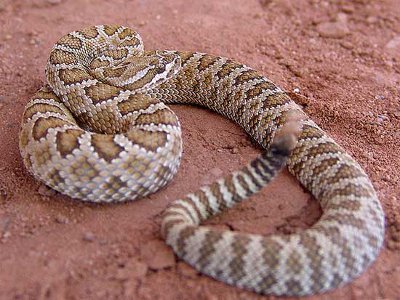Grand Canyon Rattlesnake
Category: Snakes

Facts about Grand Canyon Rattlesnake. "Scientific name for Grand Canyon Rattlesnake is Crotalus abyssus". Grand Canyon Rattlesnake is a Crotalus type of poisonous snake that is one of the members of the Viperidae family. The Grand Canyon Rattlesnakes are found only in the Arizona State in the United States. These beautiful salmon-colored or pink-colored rattlesnakes live in the Grand Canyon area of Arizona in addition to some parts of Utah. The Grand Canyon Rattlesnakes are a vital part of the bionetworks. They also live in a variety of homes, including lowland, Great Basin Desert scrubland, undulating hills and Bajadas in a pinyon-juniper forest, and pine forests. The Grand Canyon Rattlesnake is the only poisonous snake in its variety.
Features of Grand Canyon Rattlesnake
The Grand Canyon Rattlesnake is an average-size to large-size type of snake that attains a total body length, ranging from 16 inches (40 cm) to 54 inches (137 cm) when fully grown.
Dorsally, the Grand Canyon Rattlesnakes have dark marks on a diversity of base colors varying from pink, reddish, yellow or green, light brown to gray color. Usually, the marks turn into cross bands close to the tail. Usually, the juvenile Grand Canyon rattlesnakes have more famous blotches and facial marks than the adult snakes. Some adult Grand Canyon Rattlesnakes do not contain any body marks. Usually, the rostral scale of the snake comes into contact with 2 or more intranasal scales.
Black or dark gray color rings on the body of the Grand Canyon Rattlesnake habitually mark the tip of the tail. A dark stripe runs from behind their eye to the bend of their mouth. The pupils of the eyes of the Grand Canyon Rattlesnake varieties are perpendicularly elliptical and they have keeled dorsal scales. The Grand Canyon Rattlesnake has a slim neck and a broader and triangular-shaped head. These snakes have a rattle on the end of their tail, which is composed of a sequence of slackly interlocking keratinous parts. A fresh part is added every time the snake drops its skin.
The Grand Canyon Rattlesnake is competent of delivering huge amounts of powerful poison when disturbed. If encountered, the snake should be left unaccompanied. A great percentage of envenomations take place when the snake is abused or handled.
Diet of Grand Canyon Rattlesnake
Mostly, the Grand Canyon Rattlesnake feeds on mice, squirrels, birds and lizards. However, their favorite food is the bigger variety of crop-destroying rodents.
Behavior of Grand Canyon Rattlesnake
The Grand Canyon Rattlesnake is chiefly diurnal, but it can be active all over the day when conditions are constructive. The Grand Canyon Rattlesnake varieties are extremely passive, shy and non-violent, and generally just lay curved while sleeping. They are not chasers and they will bite only when they are threatened directly. The Grand Canyon Rattlesnakes are crepuscular during the fall and spring. Usually, they are nocturnal during the hottest part of the summer season. The Grand Canyon Rattlesnake hibernates during the chilly months of behind the fall and winter. Similar to the other snake varieties in its family, the Grand Canyon Rattlesnake employs heat sensing pits, which are situated on both sides of their face between the nostril and the eye, to sense warm-blooded prey and predators. The Grand Canyon Rattlesnakes are extremely adaptive to their living environment.
The average lifespan of the Grand Canyon Rattlesnake ranges from 19 years to 20 years.

 Back To Category Snakes
Back To Category Snakes